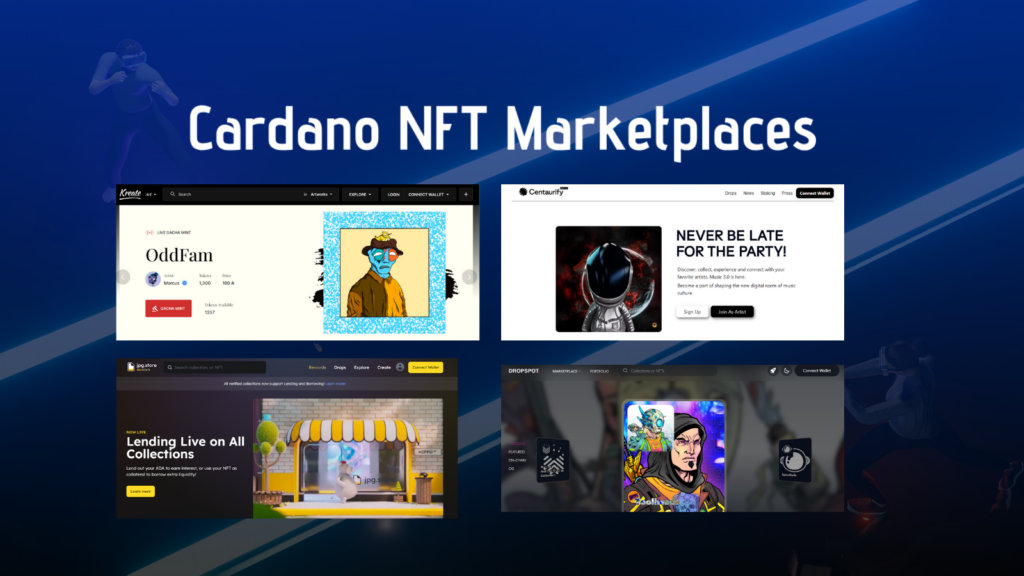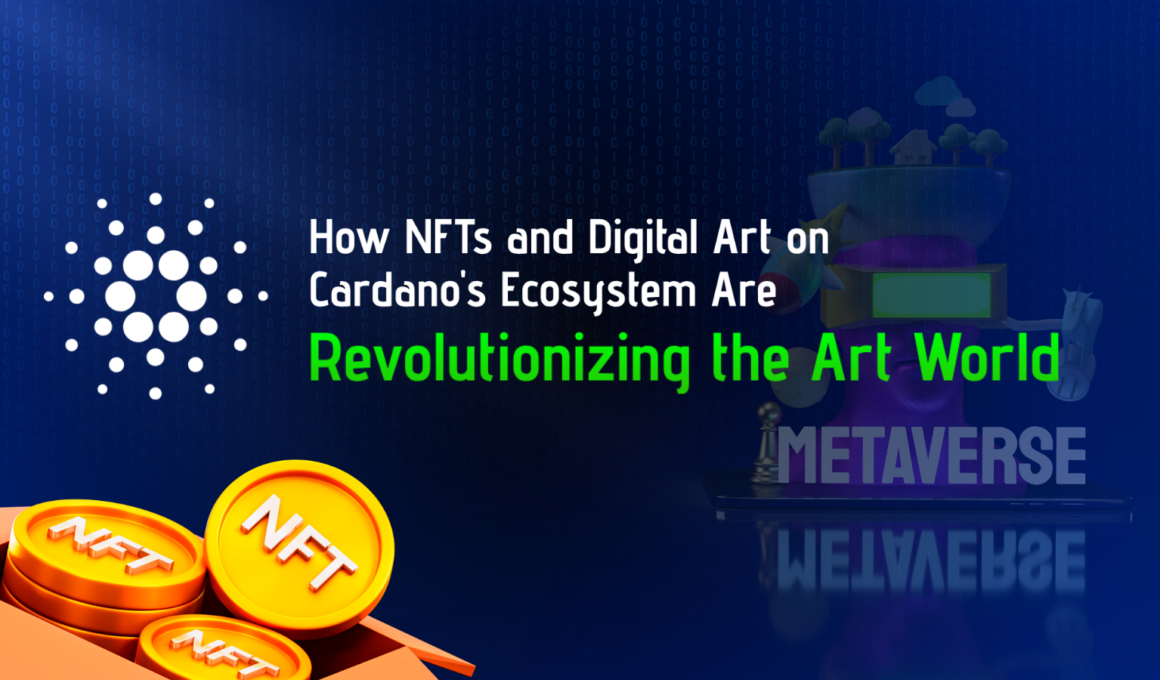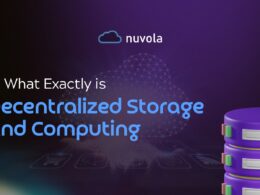The digital art world is undergoing a seismic shift with the rise of NFTs (Non-Fungible Tokens), revolutionizing how art is created, sold, and owned. As a unique blockchain platform, Cardano is at the forefront of this transformation, offering unprecedented opportunities for artists and collectors alike.
Key Takeaways
Cardano Makes Digital Art Accessible and Secure
Artists can create and sell their work directly to collectors without worrying about middlemen or hefty fees. Cardano’s blockchain technology is making digital art more accessible and secure for everyone. Plus, the blockchain ensures that each piece is authentic and can’t be duplicated, giving artists peace of mind and collectors confidence in their purchases.
Lower Fees and Eco-Friendly Transactions
One of the biggest advantages of using Cardano for NFTs is the lower transaction fees. Unlike some other platforms that can charge high fees, Cardano offers a cost-effective way for artists to mint and sell their NFTs. Additionally, Cardano’s proof-of-stake system is more energy-efficient, making it a greener option compared to other blockchain technologies. It’s a win-win for both your wallet and the planet
A Growing Community and Exciting Opportunities
The Cardano community is vibrant and growing, with artists and collectors coming together to explore new possibilities. This collaborative spirit is driving innovation and creating exciting opportunities for everyone involved. Whether you’re an artist looking to break into the digital art scene or a collector searching for the next big thing, Cardano’s ecosystem offers a supportive and dynamic environment to thrive.
The Rise of Digital Art
Digital art has been around for decades, but the advent of NFTs has given it a new lease of life, enabling artists to monetize their work in ways that were previously unimaginable. Kevin McCoy minted the first NFT, known as “Quantum,” on the Namecoin blockchain back in 2014.

(image courtesy of Sotheby’s)
NFTs have really taken off, with big projects like CryptoPunks and CryptoKitties leading the way and even making their way into metaverse platforms. 2021 was a huge year for NFTs, with the market booming and trading volumes hitting $13 billion, thanks largely to the growing craze for digital art.
From pixel art to complex 3D renderings, digital art has evolved dramatically over the years. Early digital artists often struggled to gain recognition and financial support for their work. However, the introduction of NFTs has changed the game, providing a new platform for digital artists to showcase and sell their creations.
Blockchain technology has been instrumental in the rise of digital art. By providing a secure and transparent way to verify ownership and provenance, blockchain has helped to legitimize digital art as a valuable and collectible asset.
What Are NFTs?
NFTs have their roots in the early days of blockchain technology but gained significant traction with the launch of platforms like Ethereum, which allowed for the creation and trading of NFTs. Over the past few years, NFTs have exploded in popularity, with digital art being one of the most prominent use cases.

NFTs, or Non-Fungible Tokens, are unique digital assets representing ownership of a specific item or piece of content, such as digital art, music, or even virtual real estate. Unlike cryptocurrencies like Bitcoin or Cardano, which are fungible and can be exchanged on a one-to-one basis, NFTs are one-of-a-kind and cannot be exchanged on a like-for-like basis.
NFTs are characterized by their uniqueness, provable ownership, and the ability to include metadata that provides detailed information about the asset. These characteristics make them ideal for representing digital art, where authenticity and ownership are paramount
The Role of Smart Contracts in NFTs
Smart contracts play a crucial role in the creation and trading of NFTs, enabling a wide range of functionalities and benefits. Smart contracts are self-executing contracts with the terms of the agreement directly written into code.
They automatically enforce and execute the terms, ensuring that all parties fulfill their obligations. For digital art, smart contracts offer numerous benefits, such as automated royalty payments, secure ownership transfer, and customizable features that enhance the value and functionality of NFTs.
NFTs and Digital Art Use Cases
NFTs and digital art have a wide range of use cases, extending beyond traditional art forms to include innovative applications and real-world examples.
- NFTs are being used in various industries, including gaming, music, real estate, and fashion, showcasing their versatility and potential for innovation.
- Real-world examples, such as virtual real estate in the metaverse and tokenized music albums, demonstrate the diverse and exciting applications of NFTs.
Cardano’s Approach to NFTs
Cardano’s approach to NFTs is built on its commitment to security, sustainability, and innovation. Cardano has developed its own set of standards for NFTs, ensuring that they are secure, interoperable, and easy to create and trade. These standards are designed to provide a seamless experience for artists and collectors.
Artists benefit from Cardano’s low transaction fees and robust security, while collectors enjoy the assurance of owning authentic, unique digital assets. The platform’s focus on sustainability also means that creating and trading NFTs on Cardano has a lower environmental impact compared to other blockchains.
How Artists Benefit from Cardano NFTs
Artists stand to gain significantly from the opportunities offered by Cardano NFTs, from new revenue streams to increased exposure. Cardano NFTs provide artists with new revenue streams, such as royalties from secondary sales and direct sales to collectors. The global reach of the Cardano platform allows artists to connect with a broader audience, increasing their exposure and potential for success.
Creating NFTs on Cardano
Creating NFTs on Cardano is a straightforward process, thanks to the platform’s user-friendly tools and supportive community. There are several tools and platforms available for creating and trading NFTs on Cardano, including minting platforms and marketplaces that cater specifically to the Cardano ecosystem. Follow these steps to create an NFT:
- Set up a Cardano wallet: The first step is to set up a Cardano wallet (Nami or Gero Wallet), which will be used to store your NFTs.
- Create your digital art: Use digital art software (Adobe Illustrator, Procreate, Blender and etc.) to create your artwork.
- Mint your NFT: Use a Cardano-compatible NFT minting platform (Cardano Tools, ADATokenizer, etc.) to create your NFT.
- List your NFT for sale: Choose a marketplace (JPG, Kreate) to list your NFT and set your desired price.
Cardano NFTs and their Marketplaces
Cardano’s NFT marketplaces are where the magic happens, providing a platform for artists to sell their work and for collectors to discover new pieces. Compared to Ethereum-based marketplaces, Cardano’s platforms offer lower transaction fees and a more environmentally friendly alternative, making them an attractive option for both artists and collectors.
To explore NFTs on the Cardano ecosystem, you can access a variety of tools and marketplaces. With numerous options available, there’s something for everyone, from artists to collectors to investors. Start your NFT journey on Cardano and experience more about the future of digital art and collectibles.

Did you know there are over 170 NFT tools and marketplaces on Cardano? Whether you’re new to the scene or a seasoned collector, exploring the NFT landscape on the Cardano ecosystem has never been easier. With so many options at your fingertips, you can dive right in and start discovering unique digital assets effortlessly.
Several artists and projects have found success on Cardano, showcasing the platform’s potential for digital art. Projects like SpaceBudz and artists like Alessandro have made a significant impact on the Cardano NFT scene, gaining recognition and financial success. These success stories highlight the opportunities available on Cardano for digital artists, demonstrating the platform’s potential to transform the art world.
The Future of NFTs on Cardano
The Cardano platform’s global reach enables artists to connect with a wider audience, boosting their exposure and potential success. Technological breakthroughs, such as advanced smart contracts and interoperability solutions, are poised to drive the next wave of innovation in the Cardano NFT space.
Cardano’s development team is consistently working on new features and improvements to keep the platform at the forefront of blockchain technology. With ongoing advancements and growing interest from artists and collectors, the future looks promising for NFTs on Cardano. Experts predict that Cardano will continue to grow as a leading platform for NFTs, offering exciting opportunities for artists, collectors, and investors alike.
Cardano’s ecosystem offers a new frontier for NFTs and digital art, providing artists and collectors with unique opportunities and advantages. As the platform continues to evolve and innovate, the future of Cardano NFTs looks bright, promising exciting developments and growth in the digital art space.










